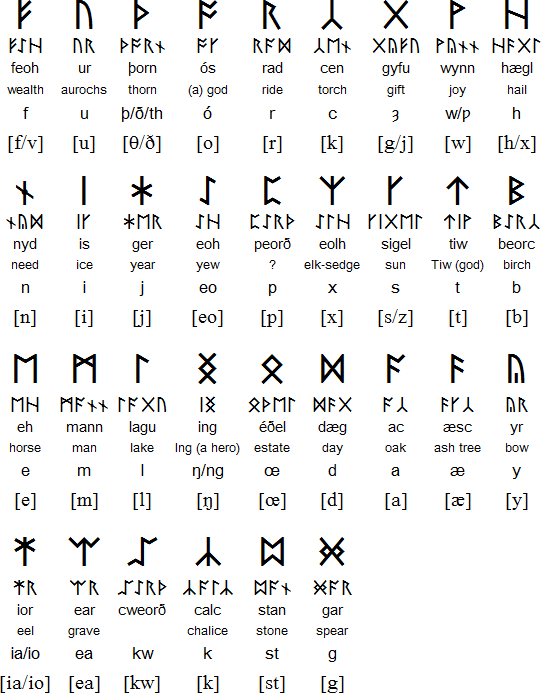Anglo-Saxon runes are an extended version of Elder Futhark consisting of between 26 and 33 letters. It is thought that they were used to write Old English / Anglo-Saxon and Old Frisian from about the 5th century AD. They were used in England until the 10th or 11th centuries, though after the 9th century they were mainly used in manuscripts and were of interest to antiquarians, and their use ceased after the Norman conquest in 1066.
One theory is that this script was developed in Frisia and then adopted in England. Another is that it was brought to England by the Vikings and then modified and later ended up in Frisia.
From the 7th century the Latin alphabet began to replace these runes, though some runes continued to appear in Latin texts representing whole words, and the Latin alphabet was extended with the runic letters þorn and wynn.
Today, many people create their own runes from wood or inscribed on stones and use them as a divination tool to try and get a glimpse at what their future holds, or indeed they can be used to try and influence wyrd and as representative tools for language or symbols of the gods.
The full Futhorc is shown below. The Anglo Saxon Futhorc rune poem is a surviving manuscript that interprets the runes, albeit some Christianisation has already taken place by the time the manuscript was written, as can be evidenced from the script.

